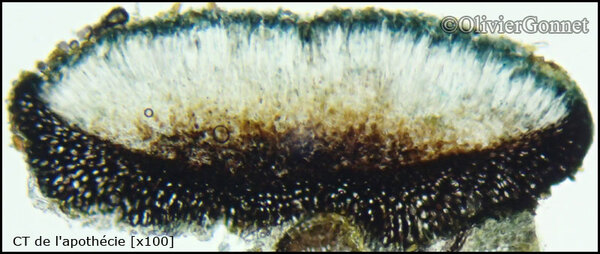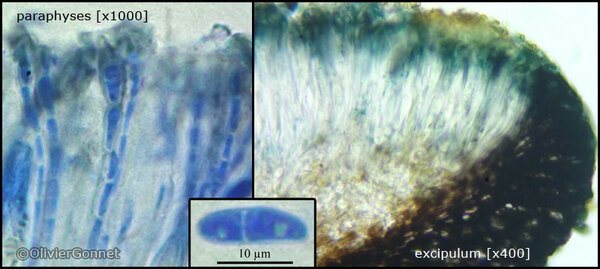Placynthium hungaricum Gyeln.
Borbasia, 1: 52, 1939.
Synonyms:
Distribution: N - VG, Frl, Lomb (UPS-L-160451). C - Abr (Nimis & Tretiach 1999), Mol (Nimis & Tretiach 1999, Caporale & al. 2008). S - Camp (Aprile & al. 2003b).
Description: Thallus crustose-placodioid, firmly attached, forming 20(-30) mm wide rosettes or convex pillows, brown-black, but densely whitish to blue-grey-pruinose, usually without a distinct prothallus. Central part of thallus consisting of cylindrical, up to 1(-1.5) mm tall, simple or sparingly branched, ascending to erect, often densely crowded, coralloid outgrowths; marginal lobes radiating, continuous to slightly overlapping, up to 1.5 mm long and up to 0.3 mm wide, simple or weakly branched. Thallus paraplectenchymatous throughout, the photobiont occupying a c. 0.4 mm thick upper layer. Apothecia rather frequent, biatorine, up to 1 mm across, black, rounded. Hymenium I+ blue, 100-110 µm high. Asci 8-spored, apically thickened, with an amyloid cap. Ascospores 1(-2)-septate, hyaline, ellipsoid, sometimes weakly curved, (10-)13-19(-21) x 4–6(-7.5) µm. Photobiont cyanobacterial, Scytonema-like. Spot tests: all negative. Chemistry: without lichen substances.Note: a Mediterranean to mild-temperate species found on steeply inclined, sun-exposed seepage tracks of calcareous rocks, usually below the subalpine belt; certainly much overlooked and more widespread, at least in the submediterranean belt.
Growth form: Crustose
Substrata: rocks
Photobiont: cyanobacteria, filamentous (e.g. Nostoc, Scytonema)
Reproductive strategy: mainly sexual
On otherwise dry surfaces with short periods of water seepage after rain
Commonnes-rarity: (info)
Alpine belt: absent
Subalpine belt: absent
Oromediterranean belt: absent
Montane belt: rather rare
Submediterranean belt: rare
Padanian area: absent
Humid submediterranean belt: absent
Humid mediterranean belt: absent
Dry mediterranean belt: extremely rare
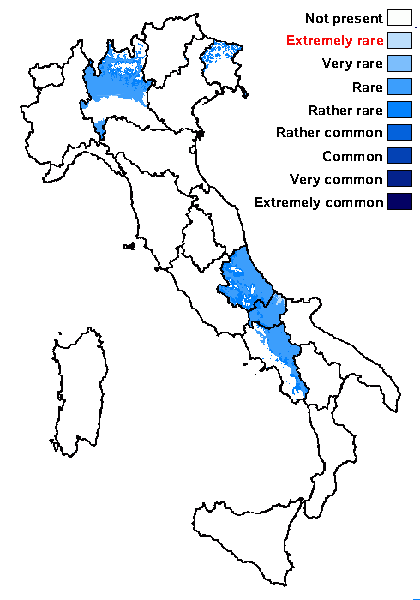
Predictive model
Herbarium samples
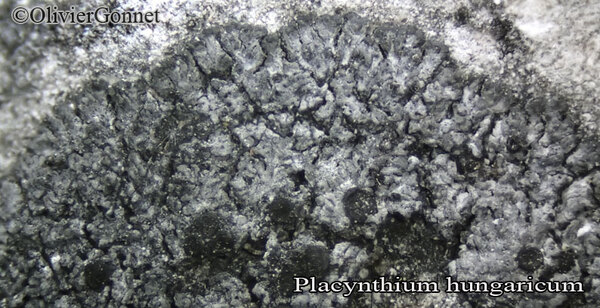
Courtesy Danièle et Olivier Gonnet - Source: https://www.afl-lichenologie.fr/Photos_AFL/Photos_AFL_P/Text_P_3/Placynthium_hungaricum.htm
France, session AFL 2015 dans le Lot, Autoire
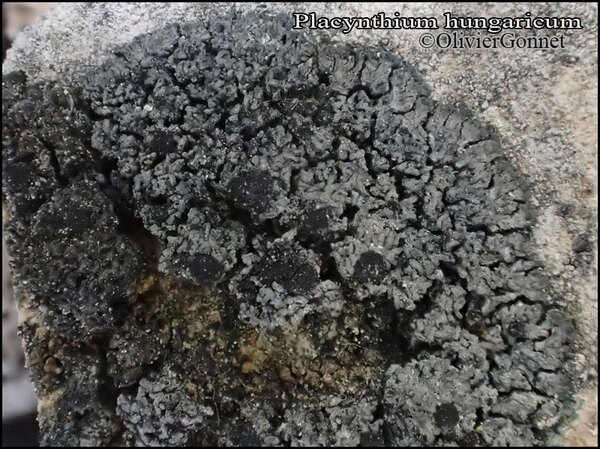
Courtesy Danièle et Olivier Gonnet - Source: https://www.afl-lichenologie.fr/Photos_AFL/Photos_AFL_P/Text_P_3/Placynthium_hungaricum.htm
France, session AFL 2015 dans le Lot, Autoire
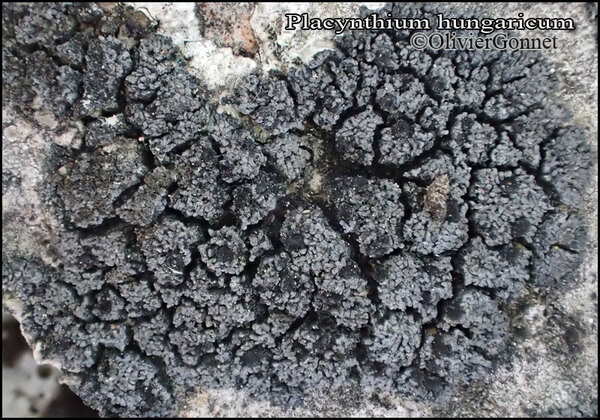
Courtesy Danièle et Olivier Gonnet - Source: https://www.afl-lichenologie.fr/Photos_AFL/Photos_AFL_P/Text_P_3/Placynthium_hungaricum.htm
France, session AFL 2015 dans le Lot, Autoire
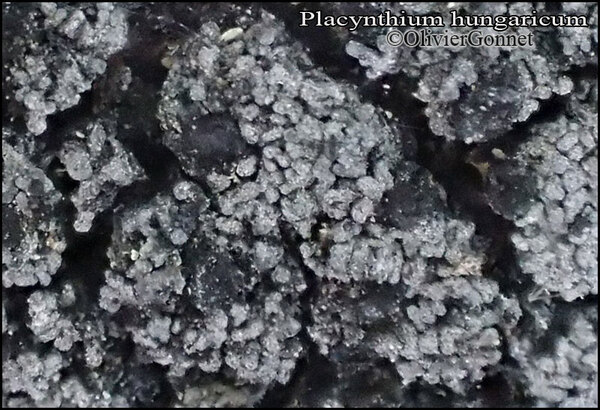
Courtesy Danièle et Olivier Gonnet - Source: https://www.afl-lichenologie.fr/Photos_AFL/Photos_AFL_P/Text_P_3/Placynthium_hungaricum.htm
France, session AFL 2015 dans le Lot, Autoire
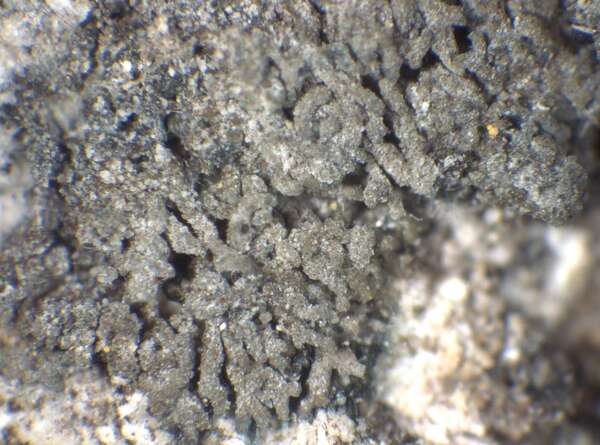

P.L. Nimis; Owner: Department of Life Sciences, University of Trieste
Herbarium: TSB (3318)
2003/03/12
Growth form: Crustose
Substrata: rocks
Photobiont: cyanobacteria, filamentous (e.g. Nostoc, Scytonema)
Reproductive strategy: mainly sexual
On otherwise dry surfaces with short periods of water seepage after rain
Commonnes-rarity: (info)
Alpine belt: absent
Subalpine belt: absent
Oromediterranean belt: absent
Montane belt: rather rare
Submediterranean belt: rare
Padanian area: absent
Humid submediterranean belt: absent
Humid mediterranean belt: absent
Dry mediterranean belt: extremely rare

Predictive model
| Herbarium samples |

Courtesy Danièle et Olivier Gonnet - Source: https://www.afl-lichenologie.fr/Photos_AFL/Photos_AFL_P/Text_P_3/Placynthium_hungaricum.htm
France, session AFL 2015 dans le Lot, Autoire

Courtesy Danièle et Olivier Gonnet - Source: https://www.afl-lichenologie.fr/Photos_AFL/Photos_AFL_P/Text_P_3/Placynthium_hungaricum.htm
France, session AFL 2015 dans le Lot, Autoire

Courtesy Danièle et Olivier Gonnet - Source: https://www.afl-lichenologie.fr/Photos_AFL/Photos_AFL_P/Text_P_3/Placynthium_hungaricum.htm
France, session AFL 2015 dans le Lot, Autoire

Courtesy Danièle et Olivier Gonnet - Source: https://www.afl-lichenologie.fr/Photos_AFL/Photos_AFL_P/Text_P_3/Placynthium_hungaricum.htm
France, session AFL 2015 dans le Lot, Autoire


 Index Fungorum
Index Fungorum
 GBIF
GBIF
